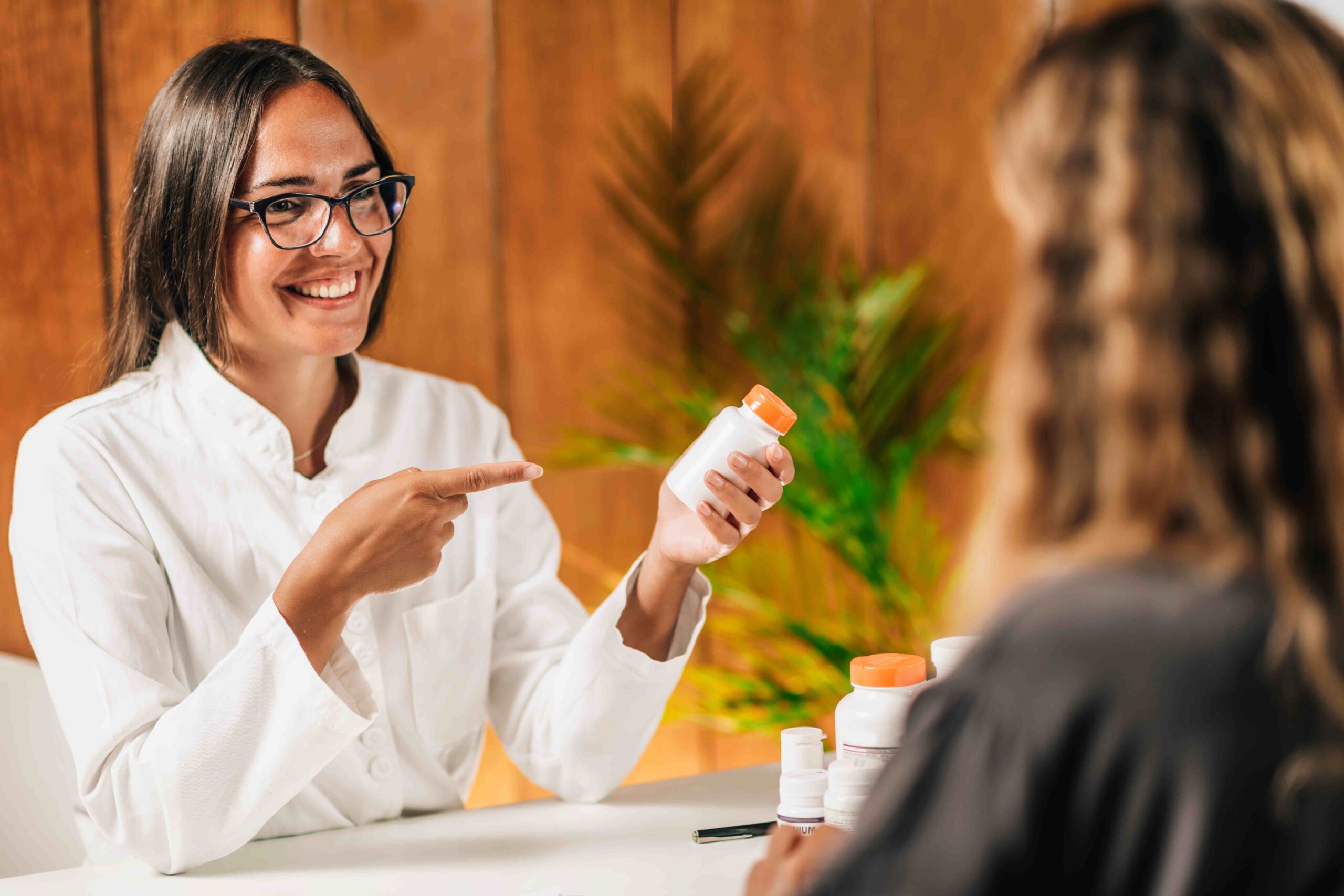Choosing Life Line Services
At Life Line Services, we’re all about helping folks find their way to wellness, especially those trying to kick high-dose opiates safely. We get that opioid dependence is a tough nut to crack. That’s why we’ve got a bunch of services to back you up on your road to recovery.
All-Inclusive Wellness Care
Our wellness care isn’t just about tackling the physical side of opioid dependence. We go the extra mile, looking after your body, mind, and spirit.
Our Acute Care services jump in right when you need them, easing withdrawal symptoms and making those first steps to recovery a bit more bearable. Curious about how it all works? Check out how acute care services work.
We know opioid dependence messes with your head too. That’s why our Individual Counseling services offer a safe space to talk it out, figure out what sets you off, and come up with ways to cope. Dive into the individual counseling techniques we use and read some individual counseling success stories.
We also believe in the power of the mind-body connection. That’s why we offer Ketamine Assisted Treatment (KAT). This cutting-edge approach has shown promise in tackling mental health issues like depression, anxiety, and PTSD. See how ketamine assisted treatment can help with mental health.
Specialized Treatments
On top of our all-around wellness care, we have specialized treatments for opioid dependence.
Our Medication Assisted Treatment (MAT) uses FDA-approved meds like Suboxone, along with counseling and behavioral therapies, to treat substance use disorders from all angles. Learn about the effectiveness of medication assisted treatment and the long-term benefits of medication assisted treatment.
Suboxone treatment, in particular, has proven to be a game-changer in reducing withdrawal symptoms and cutting down the chances of relapse. Check out our suboxone treatment success stories.
But we don’t stop at opioid dependence. Our Weight Loss Solutions program helps you hit and keep a healthy weight with personalized diet and exercise plans. Discover our sustainable weight loss strategies.
Choosing Life Line Services means picking a team that genuinely cares about helping you take back your life. Whether you’re starting your recovery journey from opioid dependence or looking for overall wellness support, we’re here to walk with you every step of the way.
Understanding Opioid Dependence
We’re here to shed some light on the serious issue of opioid dependence. Knowing how opioids affect you and the risks involved is a big step towards kicking the habit and moving away from high doses safely.
Impact of Opioid Usage
Opioids are like the heavyweights of pain relief. They can knock out pain but can also lead to addiction. Why? Because they don’t just ease pain—they also give you a euphoric high. Over time, your body gets used to them, and you need more to get the same effect. This can lead to both physical and mental dependence (Cleveland Clinic). If you suddenly stop or cut back, withdrawal symptoms can hit hard.
In 2019, nearly 50,000 people in the U.S. died from opioid overdoses. This shows just how serious the opioid crisis is (Cleveland Clinic).
Side Effects and Risks
Using opioids comes with a laundry list of side effects:
- Feeling sleepy
- Dizzy spells
- Nausea
- Throwing up
- Constipation
- Getting hooked
- Needing more to get the same effect
- Breathing problems (PubMed)
There are also some less common side effects like delayed stomach emptying, increased sensitivity to pain, immune and hormone issues, muscle stiffness, and sudden muscle jerks. Constipation and nausea are the most common.
If you follow your prescription to the letter, the chances of getting addicted are lower. But if you misuse them or use them for chronic pain, you’re playing with fire (Cleveland Clinic).
Knowing the risks of opioid dependence is the first step to recovery. If you’re ready to break free, our comprehensive opioid addiction treatment at Life Line Services can help you through the tough process of transitioning from high dose opiates safely.
Safe Transitioning from Opiates
Kicking high-dose opiates to the curb isn’t a walk in the park. It takes a solid plan and some expert help. At Life Line Services, we’ve got your back with the support and resources you need to get through this tough time.
Why You Need Proper Guidance
Going cold turkey on high-dose opiates? Bad idea. Always check in with your doctor or pharmacist before making any changes to your meds. Stopping suddenly can lead to nasty withdrawal symptoms.
At Life Line Services, we get that opioid withdrawal is no joke. We offer comprehensive opioid addiction treatment and individual counseling to help you handle the rough patches.
We know that everyone’s journey is different. Our team will work with you to create a personalized treatment plan that fits your unique needs, helping you transition from high-dose opiates safely.
Tapering Techniques
Tapering off your meds can make withdrawal symptoms more manageable or even prevent them altogether. But you gotta do it slowly and with a pro guiding you.
According to NCBI, the best way to kick opioids is by substituting and tapering with methadone or buprenorphine. At Life Line Services, we offer medication-assisted treatment options that include these meds to help you manage withdrawal symptoms and make a safe transition.
We also have ketamine-assisted treatment and suboxone treatment for opioid addiction, focusing on long-term recovery and wellness.
Managing withdrawal during dose reduction is key to transitioning from high-dose opiates. With our comprehensive approach to opioid addiction, we aim to give you the best support and care possible.
Remember, getting off high-dose opiates isn’t a sprint; it’s a marathon. We’re here to guide you every step of the way, providing the support and resources you need to find your path to recovery and wellness.
Alternatives to Opioids
At Life Line Services, we’re all about helping folks move away from high-dose opiates safely. We believe in exploring non-opioid options for pain relief. These alternatives can ease pain without the long-term risks tied to opioids.
Non-Opioid Pain Relief
Non-opioid meds include over-the-counter stuff like ibuprofen, acetaminophen, steroids, antidepressants, anticonvulsants, and creams or gels. You can use these alone or mix ’em up to tackle different kinds of pain, whether it’s a sudden ouch or a long-term ache.
For joint pain, shots with corticosteroids or hyaluronic acid can be a game-changer. According to the Osteoarthritis Research Society International, these injections can zap pain and inflammation pretty quickly.
Epidural steroid injections are another option, especially for back pain issues like lumbar radiculopathy and spinal stenosis. These shots go straight to the pain source, offering targeted relief.
Spinal cord stimulation is also making waves. High-frequency stimulation with 10 kHz waveforms has shown to cut pain and reduce opioid use in chronic pain patients. Over 70% of folks treated this way report more than 50% pain relief.
Meds That Aren’t Opioids
Besides the usual non-opioid meds, there are other pharmacologic options. Think acetaminophen, NSAIDs, gabapentin for nerve pain, and duloxetine for chronic nerve pain.
If you’re into natural stuff, there are herbal remedies too. These can help manage pain and keep you off long-term opioids.
At Life Line Services, we’re all about personalized care. Our team works closely with each person to create a treatment plan that fits their needs. Whether it’s non-opioid meds, other pharmacologic options, or specialized treatments, we’re here to help you manage pain and safely transition from high-dose opiates. Check out our comprehensive opioid addiction treatment page to learn more.
Effective Withdrawal Methods
Kicking high-dose opiates to the curb isn’t a walk in the park, but knowing your options can make the journey smoother. Let’s chat about two heavy hitters in the withdrawal game: Buprenorphine and Methadone. Then, we’ll check out two α2-receptor agonists: Clonidine and Lofexidine.
Buprenorphine vs. Methadone
Buprenorphine and Methadone are like the Batman and Superman of opioid withdrawal. Both pack a punch, but which one suits you better depends on your unique needs.
Buprenorphine has been a game-changer since the FDA gave it the green light in 2002. It’s a long-acting, sublingual superhero that works wonders for detox and maintenance. Starting with a dose around 4 mg, it can be bumped up based on how you’re doing. Most folks find their sweet spot between 16 to 24 mg per day. Studies show Buprenorphine leads to lower withdrawal scores, better retention in treatment, and higher chances of completing withdrawal compared to other meds like Clonidine or Lofexidine.
Methadone is another powerhouse. It’s effective, long-lasting, and safe when dosed right. Start with less than 40 mg to keep things safe, and then slowly taper off. In an inpatient setting, you can usually taper off Methadone in about a week with an 80% retention rate.
Clonidine and Lofexidine
Now, let’s talk about Clonidine and Lofexidine. These α2-receptor agonists might not have the same star power as Buprenorphine and Methadone, but they get the job done.
Clonidine is a solid choice for easing withdrawal symptoms. It’s been shown to be more effective than a placebo and can shorten treatment duration compared to Methadone dose reduction (PubMed).
Lofexidine is another option with a good track record. It helps with withdrawal symptoms and has a tolerable side-effect profile. Patients on Lofexidine often experience milder symptoms and better treatment retention compared to those on a placebo (PubMed).
At Life Line Services, your safety and comfort are our top priorities. We’re here to support you every step of the way, offering the guidance and medical assistance you need for a smooth transition from high-dose opiates. Check out our comprehensive approach to opioid addiction treatment and medication-assisted treatment options to learn more.
Medications for Opioid Withdrawal
At Life Line Services, we get it—kicking high-dose opiates is no walk in the park. It takes a careful, personalized approach. That’s why we look at different meds to help with opioid withdrawal. Two big ones are Tramadol and Naltrexone, both proven to ease those nasty withdrawal symptoms.
Tramadol: A Helping Hand
Tramadol, a mild opioid, has shown promise in easing withdrawal. A study on PubMed found it works about as well as Buprenorphine in keeping folks on track and reducing withdrawal symptoms. So, it’s a solid option for those looking to quit opioids with our medication-assisted treatment for addiction program.
But let’s be real—Tramadol isn’t a magic bullet. Its effectiveness can vary based on your overall health, how severe your addiction is, and how committed you are to getting clean.
Naltrexone: The Blocker
Another go-to med is Naltrexone, which blocks the effects of opioids. According to NCBI, it works by competing with opioids at the mu receptor. But heads up, it can have high dropout rates.
To avoid sudden withdrawal, you need to be off opioids for a bit before starting Naltrexone. Typically, you’ll stay on it for 6 to 12 months, with regular check-ins to see how you’re doing.
As part of our comprehensive opioid addiction treatment, we make sure Naltrexone is just one piece of a bigger puzzle. Your treatment plan might also include acute care, individual counseling, and spiritual counseling.
Whether you’re eyeing Tramadol or Naltrexone, remember, you don’t have to go through this alone. Our team at Life Line Services is here to support you every step of the way, offering resources and care tailored just for you.
Best Practices for Withdrawal
Getting off high-dose opiates can be tricky, but with the right plan, it’s totally doable. At Life Line Services, we’ve got the best tricks up our sleeves to make sure you get through withdrawal safely. We mainly use methadone and buprenorphine, two meds that really help manage those nasty withdrawal symptoms.
Methadone Tapering Process
Methadone is a champ when it comes to easing off opiates. It’s taken orally, works for a long time, and is pretty safe if you start with the right dose (NCBI). We kick things off with less than 40 mg to keep things safe and then slowly reduce the dose. Usually, we can taper off methadone in about 5 to 7 days if you’re staying with us, and we’ve got an 80% success rate with this method.
But hey, that’s just one piece of the puzzle. At Life Line Services, we know that getting through withdrawal is just the beginning. The real magic happens after detox, with ongoing treatment and support (comprehensive approach to opioid addiction).
Buprenorphine Induction
Buprenorphine is another superstar in the world of opioid withdrawal. The FDA gave it the green light in 2002 for treating opioid dependence (NCBI). We usually start with a 4 mg dose under the tongue and adjust based on how you’re doing. Most folks end up needing between 16 to 24 mg per day.
Research shows that buprenorphine leads to fewer withdrawal symptoms, better retention in treatment, and a higher chance of completing withdrawal compared to other meds like clonidine or lofexidine. And when you stack it up against methadone, it’s just as good in terms of treatment duration and success rates, making it a solid option for many.
Getting off high-dose opiates isn’t a walk in the park, but it’s not impossible either. At Life Line Services, we’re all about giving you the best tools, support, and care to make the transition smoother. From picking the right meds to offering individual counseling and comprehensive wellness care, we’re here to help you take back control of your life, manage your pain, and live healthier.
Ensuring Long-Term Success
Getting off high dose opiates isn’t just about kicking the physical habit; it’s about committing to a healthier, happier future. At Life Line Services, we focus on two key parts of recovery: Post-Withdrawal Maintenance and Individualized Treatment Plans.
Post-Withdrawal Maintenance
Once you’ve tackled the physical dependence on opiates, the real challenge begins. Staying on track and avoiding relapse is crucial. According to NCBI, the best long-term results come from post-detox treatment. Long-term maintenance on methadone or buprenorphine works wonders.
Methadone, taken orally, is effective and long-lasting. When dosed carefully, it can be used in an inpatient setting with an 80% retention rate. Buprenorphine, approved by the FDA in 2002 for office-based treatment, usually ranges from 16 to 24 mg per day.
Everyone’s withdrawal experience is different, so what works for one person might not work for another. That’s why we offer comprehensive opioid addiction treatment and long-term benefits of medication-assisted treatment to help you succeed.
Individualized Treatment Plans
Recovery is personal, and a one-size-fits-all approach just doesn’t cut it. At Life Line Services, we create individualized treatment plans tailored to your unique needs and goals.
Whether you’re using our acute care services, individual counseling techniques, or ketamine-assisted treatment for depression, our team is here to help you through your recovery journey.
From integrating spiritual counseling into recovery to offering sustainable weight loss strategies, we’re here to support you every step of the way. We’re committed to helping you maintain your progress and avoid relapse, giving you the tools and support you need for long-term success.
Remember, getting off high dose opiates safely is a journey that requires ongoing commitment and support. With the right guidance, resources, and treatment plan, you can overcome opioid dependence and start a new chapter in your life.







